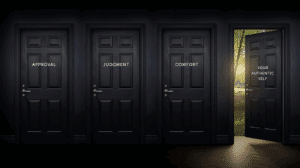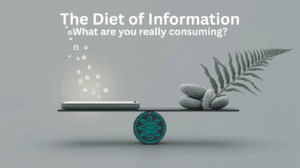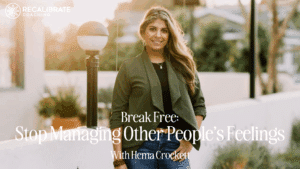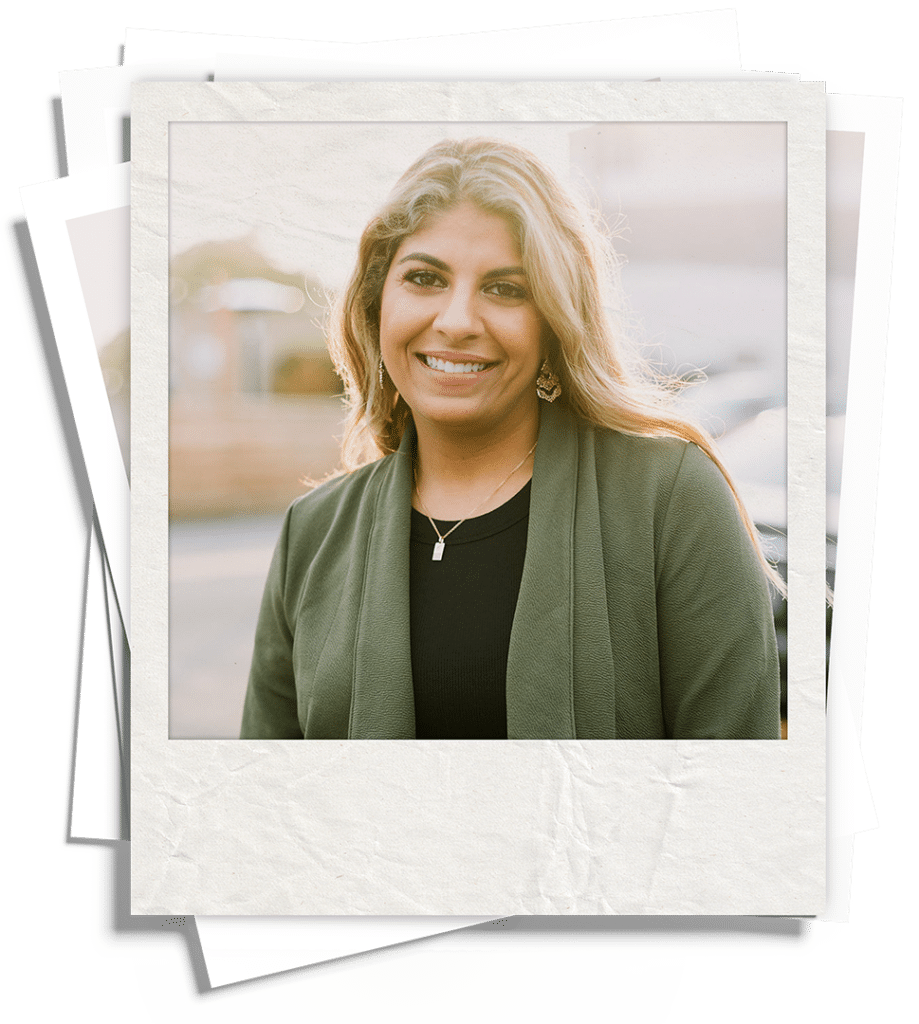How often have you thought to yourself, “I’m a good person?”
How often have you looked at someone else and wondered, “Are they a good person?”
Now, what characteristics make up a “good person?”
Are these things like niceness, kindness, availability, volunteering, alignment of actions and words, living sustainably, putting others first, working hard, or being a caregiver?
How many of the characteristics of a “good person” that you thought about do you embody? How many do you live on a daily basis? How many of these characteristics do you try to live up to? You may not always succeed, but boy do you try.
The Moral Identity Trap
According to Dolly Chugh, psychologist, TED Talk speaker and professor at New York University, most of us have a central ‘moral identity.’ This moral identity is a measure of whether I care about being a good person. Not whether I am a good person.
Think about that for a moment – what matters isn’t whether we actually are a good person, but that we want to feel like a good person. We want to be viewed as a good person by others. We want the Good Person Identity but we don’t care as much about doing the actions that would in fact make us a good person. Or, if we do the actions, we want others to see that we are trying even if we fall short. We want to be celebrated for these efforts.
This desire for the “good person” label is just another form of external validation – another way we define ourselves by what others think rather than who we truly are. It’s conditioning disguised as morality.
The Identity vs. Action Confusion
The idea of identity is such a fascinating one. If I asked you to tell me who you are without telling me what you do, your relationship status, your hobbies, etc. could you? If you could, then you’re telling me your identity – the things that make you unique. If you couldn’t, then perhaps you’re conflating your identity with what you do.
“I’m a lawyer.” “I’m a doctor.” “I’m an entrepreneur.” “I’m a writer.” “I’m a good person.”
None of these things tell me who you actually are. They all tell me what you do or what label you wear. It’s easy for us to name what we do as our identity and allow others to define us. It means we can avoid sitting still and looking inward. We don’t have to really look at ourselves.
This avoidance isn’t accidental. Looking inward requires us to confront the gap between who we think we should be and who we actually are. It requires us to question the stories we’ve been told about success, goodness, and worthiness. It requires us to examine the conditioning that has shaped us since childhood.
My Own Journey: From Labels to Authentic Self
For many years, I related to myself based on what I did. I was an HR Executive. My friends were from the HR community. The events I attended were HR events. When LinkedIn or other social media platforms asked me to write an about section, it always started with, “HR Executive.” It was something I was proud of. Something I had earned. Something I worked hard to achieve. I was an HR Executive.
But here’s what I didn’t realize then: I had become so identified with this role that I couldn’t separate my sense of self from my professional achievement. My worth was tied to my title, my salary, my corner office. When people asked who I was, I immediately reached for my business card – literally and figuratively.
When I initially left Corporate America, my identity changed. I was no longer an HR Executive. I was a Recovering HR Executive who was also an Entrepreneur. I sat up even taller now – I had started a company. I had done the thing many have dreamed about doing. I was brave, I was bold, I was different.
At the end of the day, this was simply more labels. No real identity. I had traded one external definition for another, one form of conditioning for a different flavor of the same trap.
The Recalibration Process: Stripping Away What Isn’t You
So, when I began to recalibrate and strip away my conditioning, limiting beliefs, biases, and societal expectations, I also started to strip away my identity. This process wasn’t comfortable. In order to do this, I had to confront the fact that I might lose credibility with people who didn’t know me.
Telling someone what I did instantly gave me, not only credibility, but a certain level of achievement. There was pride in that. There was safety in that. There was a shorthand that allowed others to categorize me quickly and efficiently.
But I needed to get vulnerable. I needed to strip away the illusions of what I think I should be in order to be who I already was.
This unbecoming process revealed layers of conditioning I hadn’t even realized were there:
Familial conditioning: The voice of my parents telling me what constituted success and security.
Cultural conditioning: The messages from my community about what roles were appropriate for someone like me.
Gender conditioning: The subtle and not-so-subtle expectations about how I should show up in the world as a woman.
Societal conditioning: The broader narratives about achievement, productivity, and worth that permeate our culture.
Professional conditioning: The specific beliefs about leadership, success, and identity that come with corporate environments.
Each layer had to be examined, questioned, and either integrated consciously or released completely.
Who Am I Really?
I’m not an HR Executive. Nor am I a Recovering HR Executive (although this does make people laugh). I’m not an author. I’m not an investor. I’m not a business owner. These are things I do. They are external things that can change over time. They are not who I am. Who I am is more internal; it’s my core essence.
Who am I? I am someone who questions what is and removes obstacles so that others can see what can be. I am someone who seeks deep connection. I am someone who is curious about all aspects of life and of our universe.
But even these descriptions feel limited because they’re still attempting to capture something infinite in finite words. The truth is, our authentic identity exists beyond language, beyond categories, beyond the need to be understood or validated by others.
The Cost of Mistaken Identity
When we mistake what we do for who we are, we pay a significant price:
Fragmentation: We split ourselves into professional and personal identities, work self and home self, public persona and private truth.
External dependency: Our sense of worth becomes dependent on external validation, achievements, and others’ opinions.
Inauthenticity: We perform roles rather than express our genuine nature.
Disconnection: We lose touch with our deeper desires, values, and purpose.
Burnout: We exhaust ourselves trying to maintain identities that aren’t truly ours.
Fear: We become afraid of change because it threatens our constructed sense of self.
The Integration Journey
The path back to authentic identity isn’t about rejecting all roles and responsibilities. It’s about integration – bringing your whole self to everything you do rather than fragmenting yourself into different personas for different contexts.
When you know who you are at your core, you can engage in various roles and activities from that centered place. You can be a parent, a professional, a community member, a friend – but these become expressions of your authentic self rather than separate identities you have to maintain.
This integration creates a profound sense of alignment. Your personal values guide your professional decisions. Your deeper purpose infuses your daily activities. Your authentic nature shows up consistently across all areas of your life.
Moving Forward: Questions for Reflection
As you consider your own relationship with identity, ask yourself:
- What aspects of my identity are based on external roles versus internal essence?
- What conditioning am I carrying that no longer serves me?
- What would I say about myself if I couldn’t mention what I do for work?
- How do I define “good” and where did those definitions come from?
- What parts of myself am I hiding in order to maintain certain identities?
- What would change if I allowed myself to be fully authentic?
The Courage to Be Nobody
There’s a beautiful paradox in identity work: when you have the courage to be “nobody” – to release all the constructed identities and labels – you discover that you are actually everybody. You are connected to the universal experience. You are part of something much larger than any role or achievement could ever provide.
This doesn’t mean becoming passive or purposeless. Instead, it means acting from authentic desire rather than conditioned obligation. It means contributing to the world from your genuine gifts rather than from what you think you should offer.
The journey from external identity to authentic self is not a destination but an ongoing practice of recalibration. It’s a continuous process of checking in with yourself, questioning assumptions, and choosing alignment over approval.
Your true identity isn’t something you need to create or achieve. It’s something you need to remember, uncover, and have the courage to express in the world. It’s who you’ve always been beneath all the stories, all the roles, and all the conditioning.
The invitation isn’t to become someone new, but to return to who you’ve always been. All those external identities – the job titles, the “good person” labels, the roles we play – are simply the human experience layered on top of our deeper truth.
As Pierre Teilhard de Chardin beautifully expressed, “We are not human beings having a spiritual experience; we are spiritual beings having a human experience.”
When we strip away the conditioning and constructed identities, what remains is that spiritual essence – the part of you that has always known who you are beyond any label or achievement. That essence has been waiting patiently for you to come home to yourself.
Continue the journey toward authentic living and personal and professional fulfillment – explore deeper insights on my Medium page and transformative content on YouTube.








